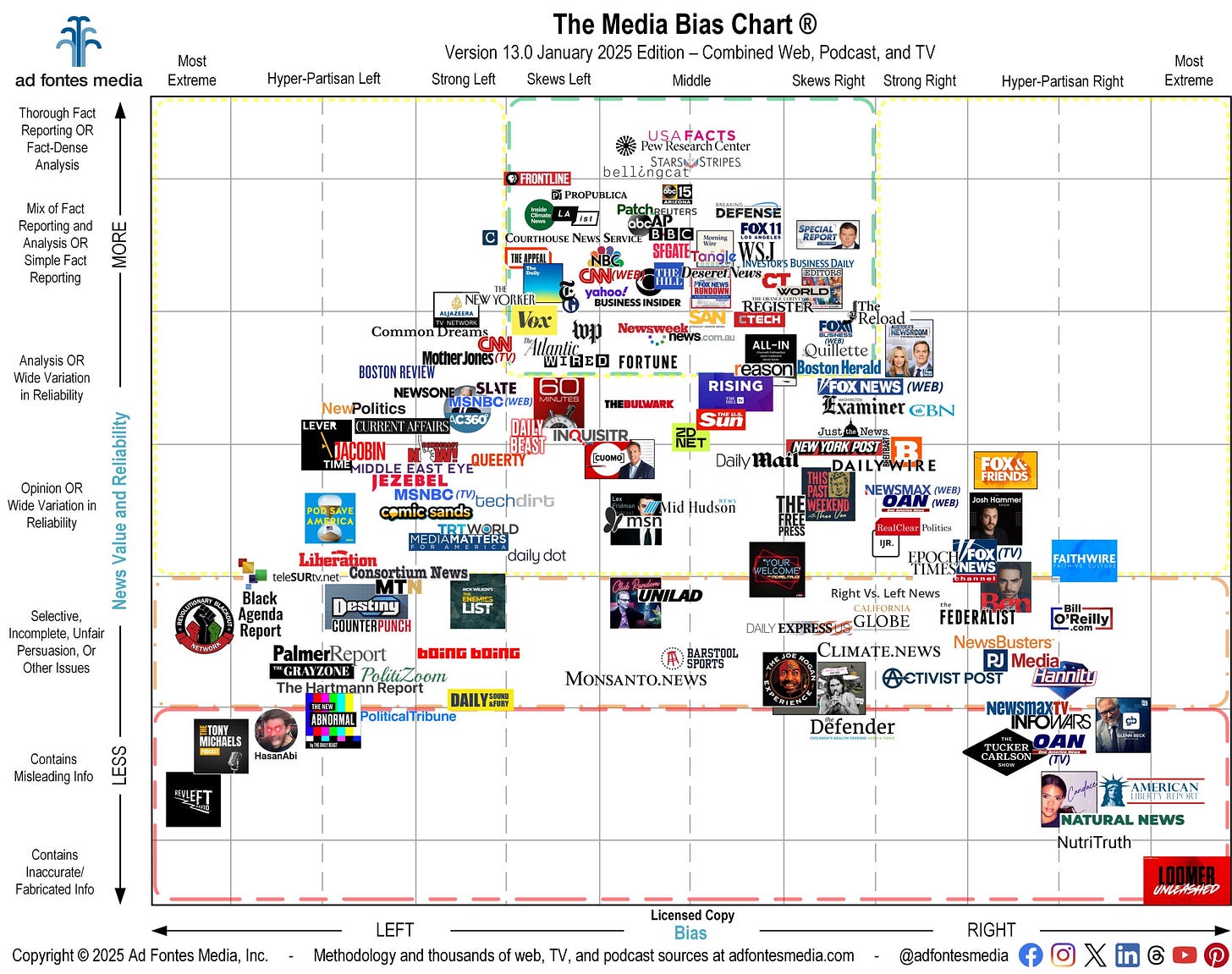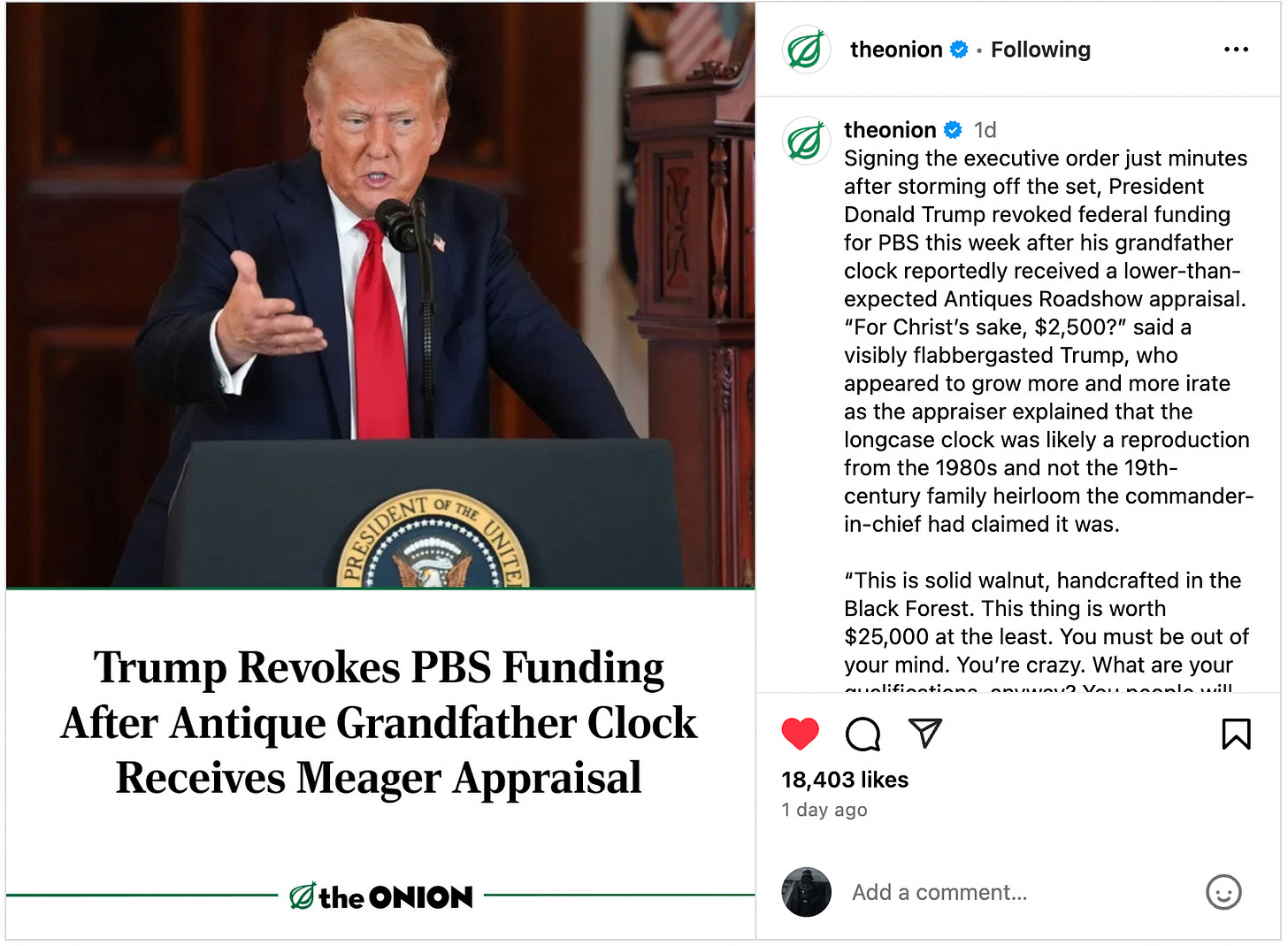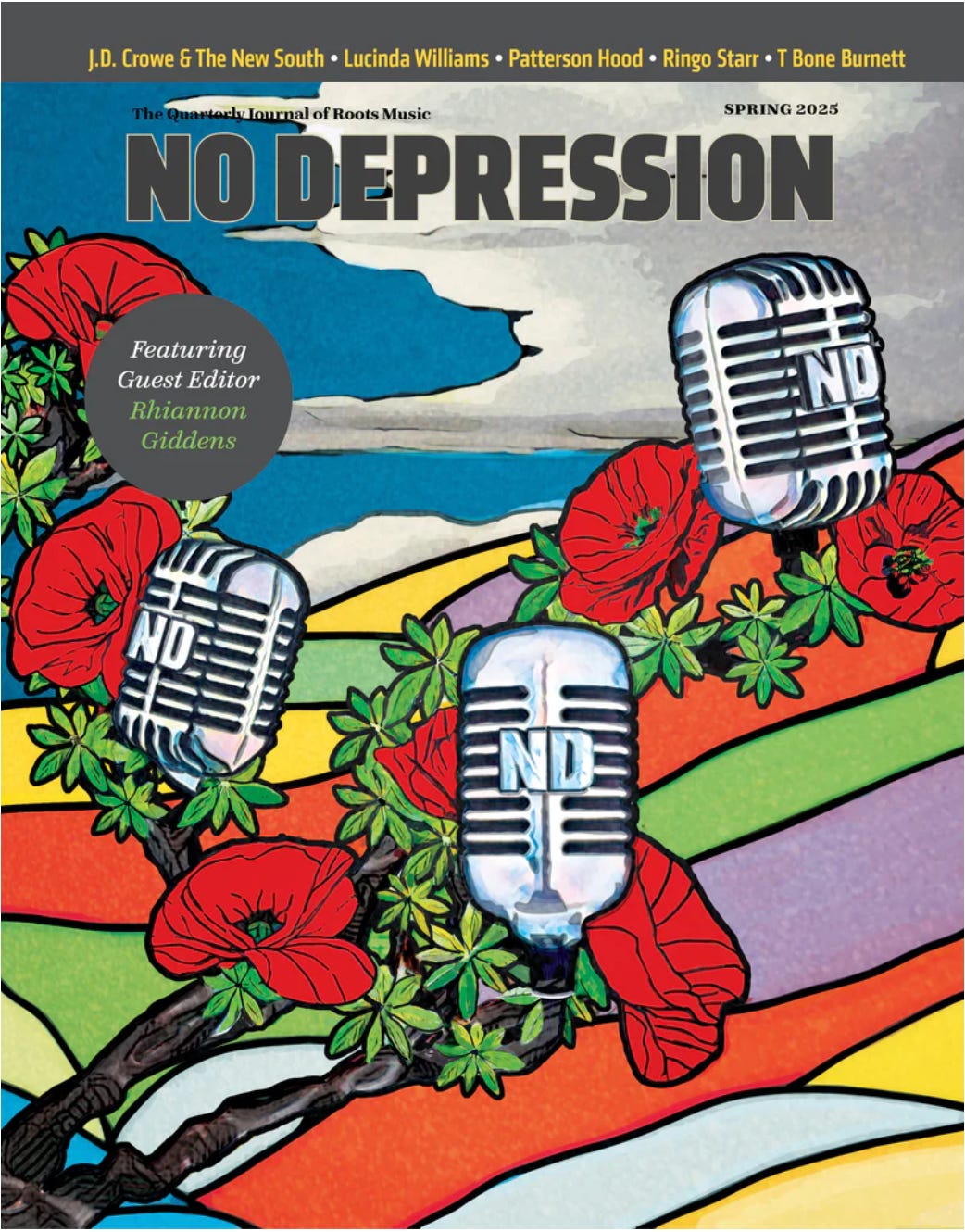Media Overthrow
President Trump has attacked the media at every opportunity—just like Project 2025 told him to.
President Trump seems to be embodying the true meaning of the Revenge of the 5th. Image courtesy of Chat GPT.
Like all of President Donald Trump’s executive orders, the presidential action “Restoring Freedom of Speech and Ending Federal Censorship” was signed in a black-Sharpie flourish. While cameras looked on and reporters asked questions, Trump scrawled his name on the 41st of 45 executive orders signed on Jan. 20, 2025, his first day in office.
The order ostensibly demanded that social media companies stop banning people (and presidents) from spreading flat-out lies on their platforms. But like almost all of Trump’s orders, there’s more going on underneath. In Section 2, the order demands that “no Federal Government officer, employee, or agent engages in or facilitates any conduct that would unconstitutionally abridge the free speech of any American citizen.” Meanwhile, in Section 3, it states “no Federal department, agency, entity, officer, employee, or agent may act or use any Federal resources in a manner contrary to section 2.”
Thursday night, Trump violated his own executive order.
In another Sharpie dervish, Trump signed an executive order pulling federal resources from public media. The order demands a few things. It mandates the Corporation for Public Broadcasting, the Congressionally created private non-profit that funnels money to National Public Radio, the Public Broadcasting System, and the member stations of each, to stop directly funding NPR and PBS. That isn’t a big of a deal. Each only gets about 1% of their budgets directly from the CPB. Another 2% of NPR’s funding and 16% of PBS’s comes in the form of grants from other government entities like the Department of Education. The order stops those as well, and that would hurt a little more.
But the biggest impact would come from the demand CPB stop indirectly funding the two media organizations. Most of the funding CPB gets from the federal government—some $500 million—is sent out to affiliates. Those member stations, in turn, pay licensing fees for shows like NPR’s “Morning Edition” and “PBS News Hour.” Without licensing fees, those shows and others would have to drastically pull back on coverage. Worse, without money to pay for national programming, local stations could end up with a lot of dead air, or in some cases, even shut down altogether.
Trump’s reasoning? Well, if you believe the executive order: “Neither entity presents a fair, accurate, or unbiased portrayal of current events to taxpaying citizens.” In fact, it’s the opposite. Both are continually rated as some of the best news organizations in the country. Yes, according to the most recent Media Bias Chart, both skew slightly left—though no more than the Wall Street Journal skews right. And both have that liberal reputation because they won’t simply go along with Republican talking points, instead often challenging leaders when they tell flat out lies.
That fact has irked Republicans so much that Trump’s action is far from the only effort to destroy public media. Texas Rep. Ronny Jackson reintroduced a bill to defund PBS and NPR back at the end of March. The White House threw its support behind the idea in mid-April. The Federal Communications Commission is investigating the two, claiming they violated their non-commercial operating licenses by running commercials, an accusation both deny. And just last week Trump tried to fire three of the five CPB directors, prompting the Corporation of Public Broadcasting to file a lawsuit claiming the president doesn’t have the authority to remove the leaders of a private company, even if it is tax-payer funded. The CPB is using the same argument to ignore the new executive order.
Of course, all of this is a continuation on a theme. The Trump Administration has been coming hard for the media since well before the inauguration. Here’s the ongoing list:
The lawsuit and settlement with ABC over George Stephanopoulos’s technically inaccurate comment on-air.
The ongoing lawsuit with CBS over the editing of Kamala Harris’s comments during a “60 Minutes” interview (which just got an Emmy nod, by the way).
The lawsuit against The Des Moines Register and J. Ann Selzer over Iowa Poll results published right before the election.
The stripping of funding of Voice of America, which a judge recently ordered reopened after putting a stay on the executive order dismantling it.
The continued banishment of the Associated Press from the White House over its refusal to call the Gulf of Mexico the “Gulf of America” despite a court order to reinstate the organization.
The Pentagon ousting major news organizations like NBC, The New York Times, and Politico from their long-held offices, replacing them with media organizations more favorable to the administration.
FCC investigations into not just into PBS and NPR, but also CBS over that same Kamala Harris interview and Comcast, parent company of NBC News, over DEI practices.
The Justice Department’s removal of shield laws protecting journalists and their sources.
The White House’s move to pick pool reporters, those allowed to cover major events and have access to the president, something historically done by the White House Correspondents Association.
The removal of Reuters, the AP, and Bloomberg, all independent newswires that supply stories to hundreds of media outlets, from the reporter pool altogether.
The launch of a White House Wire, a government website stacked with positive stories from right-wing outlets.
Special press briefings just for MAGA influencers.
And, of course, there was also Trump’s demand on Truth Social last week that all of the news organizations that released polls showing his historically low approval ratings after 100 days in office should be investigated for election fraud—despite the election being over by six months.
The Onion figured out the real reason President Donald Trump is cutting public media funding.
All of this is intentional. It’s about controlling access to information. If you can limit not just negative coverage, but all coverage, to only those who you trust to toe the line, then you can control the message—and the people. It’s Authoritarianism 101.
And we all knew it was coming. Not just because Trump himself has been deriding news organizations as fake news for a decade. But the blueprint for this sprint of media oppression was public knowledge. If you start comparing the list above to an analysis of Project 2025 Neiman Labs published back in September of 2024, it’s eerily similar. The only Project 2025 directive Trump hasn’t followed through on is banning Tik Tok, though technically that’s still up in air.
Back in the Oval Office, right before Trump signed his executive order Restoring Freedom of Speech and Ending Federal Censorship, he signed another presidential memo—the 40th of the day. This one was focused on rooting out those in the government Trump felt had wronged him. It’s title: “Ending the Weaponization of the Federal Government.”
Trump just violated that one too.
Pour One Out
The email sent to No Depression subscribers last week summed it up succinctly: “After much consideration, we’ve made the difficult decision to retire the print journal.”
It honestly came as a bit of a shock. While plenty of magazines have shuttered their print editions in the last decade, No Depression, a roots music journal run by the non-profit FreshGrass Foundation, had helped rewrite the traditional magazine business model. Since relaunching in the fall of 2015 after a seven-year gap, the prestige publication eschewed print advertising in its quarterly magazine, instead relying on a high price point and fan donations to cover the costs of its thick pages. It sparked imitators like Third Man Records’ Maggot Brain and the relaunched Creem, as well as paved the way for other niche titles like the resurrected foodie bible Saveur and the travel-focused Stranger’s Guide
The cover of the last issue of No Depression magazine, available now.
And people were willing to pay No Depression’s steep subscription price. Americana is desperately under covered, a genre that never makes it onto the radio or into the glossy pages of stalwarts like Rolling Stone. But its fans: They’re committed. And No Depression catered to them. Its richly written profiles and candid photography harken back to the early days of rock journalism—a time when writers were given space to stretch, creating the kind of vivid stories that rarely make it in print these days. It was back stage access and antre into creative spaces. It focused both on stars like bluegrass upstart Billy Strings and alt.country royalty Jason Isbell, as well as fan favorites like David Ramirez and Margo Cilker. And with guest editors like Margo Price, Lucinda Williams, and The Bacon Brothers (yes, including Kevin Bacon), the magazine felt like a conversation between Americana’s mainstays and the fans that adore them. It was passion in 10-point type.
No Depression will continue online, of course. Its digital version pre-dates this edition of the print journal by decades, the brand getting its start as the “No Depression Folder” AOL discussion board back in the ‘90s. And fans will continue to support it and FreshGrass, which also hosts annual roots music festivals in Bentonville, Arkansas, at its headquarters in North Adams, Massachusetts. But the print publication: It will be missed in the same way you grieve for your favorite club or coffee shop after it closes, longing for the community that once was and all the music that could have been.
Read of the Week
This one comes courtesy of JMM’s Drake University colleague Prof. Jennifer Wilson. It’s a deep dive into the real School of Rock and its charismatic (and creepy) founder Paul Green. According to the Airmail article, Green took a little too much interest in his students, acting equal parts dictator and match maker. He could be cruel. He could be crude. He demanded loyalty—and his early students freely gave it in hopes of making the school’s elite squad. His tactics yielded shockingly good results, though it left many traumatized for years to come. It’s a fascinating look at a narcissist leading his own (teenage) cult, one that has plenty of eerie echoes today.
Got the Inside Track?
Do you have some essential info or did you design the look of the new Family Planning Council of Iowa harm reduction vending machine like senior Kelsey Wolfe (Ads, GD)? If so, then let JMM know by sending that juicy news on over to jeff.inman@drake.edu. JMM will treat it like this story from Andre Kennard (MMJ, ’24), which was recognized as one of the best explanatory stories of the year by the Milwaukee Press Club, and tell everyone about it.
Finally, on hold with Vader and Assoc.






